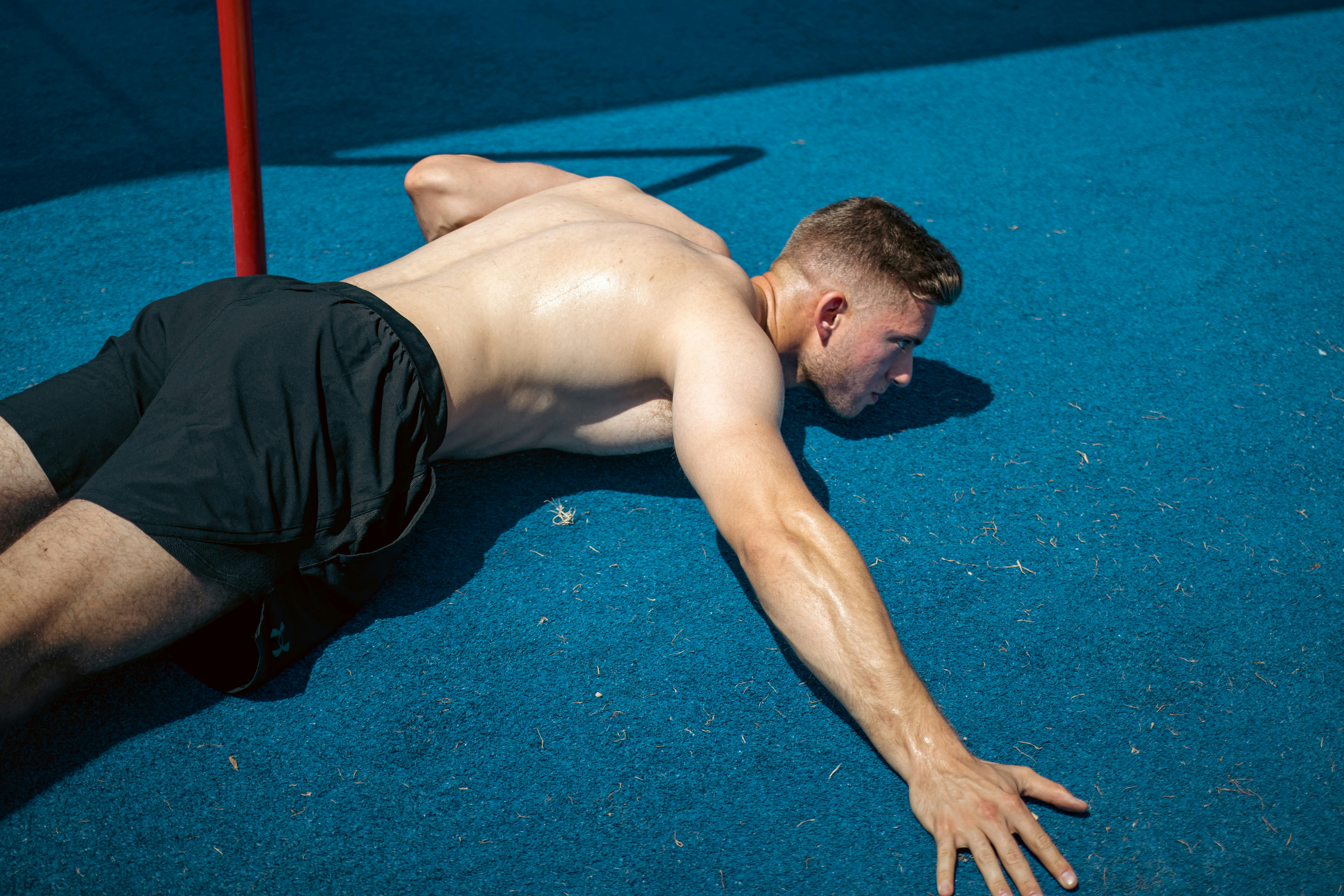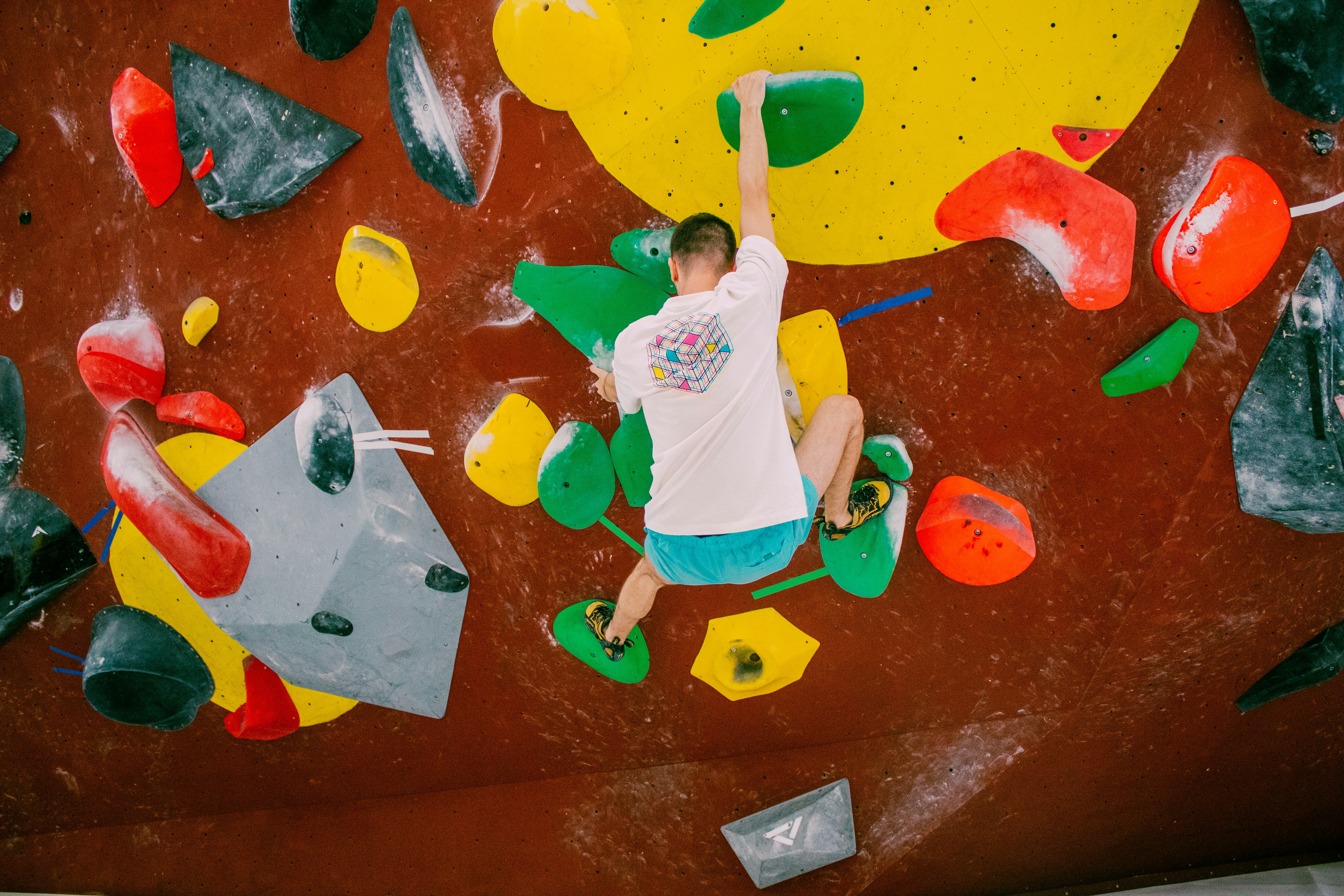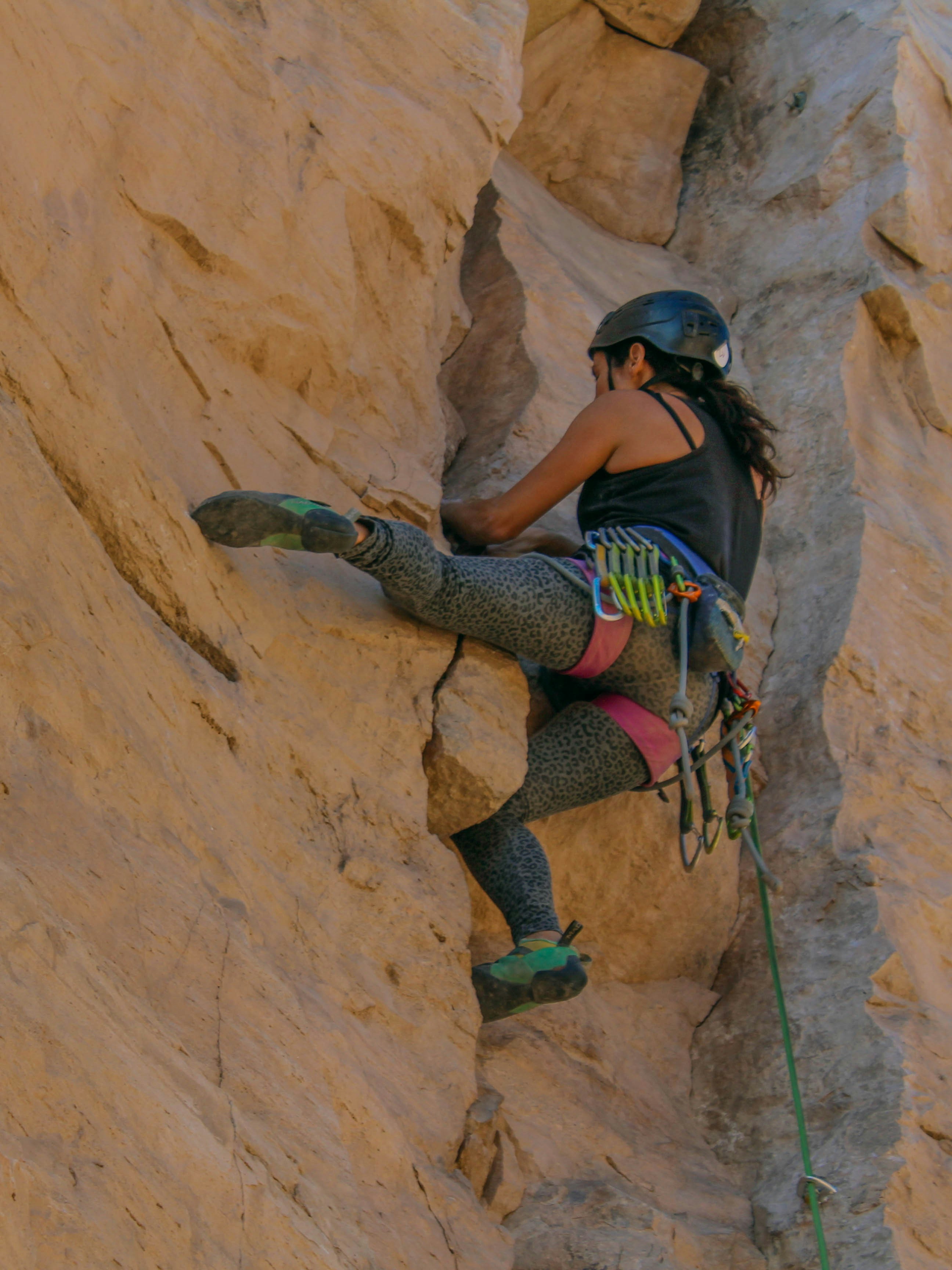The dust has barely settled from the Seoul World Championships, but elite competition climbers are already deep into their next training phase. While most climbers treat the end of major competitions as a time to rest and reset, the world's best athletes approach post-championship transitions with the same strategic precision they bring to their competition preparation. Understanding how they navigate this critical period can transform how you structure your own training cycles.
Here's what separates professional climbers from the rest of us during these transition periods: they don't just stop training and hope to pick up where they left off months later. Instead, they use post-championship phases strategically to address weaknesses, build new capacities, and set the foundation for future performance peaks. The weeks immediately following major competitions like World Championships become opportunities for targeted development that isn't possible during competition season.
The misconception that post-season means rest season is understandable. After months of high-intensity competition preparation, the natural inclination is to take a complete break and recover from the physical and mental demands of peak performance. But elite climbers know that strategic recovery is different from complete cessation. They understand that how you handle the transition out of competition season determines how effectively you can build toward the next peak.
Professional climbers also recognize that post-championship periods offer unique training opportunities. Without the pressure of upcoming competitions, they can experiment with new techniques, address movement patterns that have been problematic, and focus on longer-term development goals that get pushed aside during competition phases. The freedom from immediate performance demands creates space for the kind of deep, systematic training that produces breakthrough improvements.
The Strategic Recovery Phase
Strategic recovery is fundamentally different from passive rest. While passive rest involves simply stopping training and hoping to recover naturally, strategic recovery involves carefully planned activities designed to restore physical and mental capacities while maintaining training adaptations. Elite climbers use this phase to recover from competition stress without losing the fitness and skills they've developed.
The first component of strategic recovery is active restoration. Rather than complete inactivity, this involves low-intensity activities that promote recovery while maintaining movement quality. For climbers, this might mean easy climbing sessions focused on technique refinement, mobility work that addresses restrictions developed during intense training, or cross-training activities that provide mental refreshment while supporting physical recovery.
Psychological recovery is equally important but often overlooked. Competition season creates significant mental stress, and elite climbers recognize that mental recovery requires the same attention as physical recovery. This might involve taking a complete break from goal-oriented training, exploring new movement activities that provide mental stimulation without performance pressure, or simply allowing themselves to climb for enjoyment rather than improvement.
Sleep optimization becomes a priority during recovery phases. Competition season often involves travel, irregular schedules, and high stress levels that compromise sleep quality. Elite climbers use post-championship periods to establish healthy sleep routines, address any sleep issues that developed during competition season, and ensure they're getting the restorative sleep necessary for effective training resumption.
Nutritional reset helps address any dietary patterns that developed during competition season. The stress of competition can lead to restrictive eating, reliance on convenience foods during travel, or other patterns that don't support optimal health and performance. Strategic recovery includes returning to nutritional practices that support training adaptations and overall well-being.
Injury assessment and management is crucial during transition periods. Competition season often involves pushing through minor injuries or movement compensations that need attention once performance pressure is removed. Elite climbers use post-championship phases to address these issues before they become more serious problems that could compromise future training.
Social and lifestyle balance often gets disrupted during intense competition preparation. Strategic recovery includes reconnecting with relationships, pursuing interests outside of climbing, and restoring balance to aspects of life that may have been sacrificed during competition focus. This psychological restoration is essential for long-term motivation and performance sustainability.
Analyzing Competition Performance for Future Training
One of the most valuable aspects of post-championship periods is the opportunity for comprehensive performance analysis. Elite climbers approach this analysis systematically, using insights from competition performances to guide future training priorities and identify areas for development.
Competition video review provides objective data about performance that isn't available during the heat of competition. Elite climbers systematically review video from their competitions, analyzing technique execution, tactical decisions, and identifying specific moments where improvements could have made a difference. This analysis goes beyond just looking at what went wrong to understand patterns in their performance that might not be obvious in real-time.
Energy management analysis helps climbers understand how they handled the physical and mental demands of competition. This might involve reviewing how energy levels changed throughout competitions, identifying points where fatigue affected performance, and understanding how competition stress influenced their movement efficiency and tactical decision-making.
Technical execution under pressure reveals areas where technique development needs to focus. Competition environments create unique stresses that can expose technique weaknesses that aren't apparent in training. Elite climbers analyze how their technique held up under competition pressure and identify specific skills that need reinforcement or refinement.
Tactical decision-making review helps improve competition strategy. This involves analyzing route reading accuracy, risk management decisions, and how well tactical plans executed under pressure. Elite climbers look for patterns in their tactical decision-making that they can improve for future competitions.
Physical preparation assessment examines how well their training prepared them for competition demands. This might involve analyzing strength endurance performance, recovery between rounds, or how well their training movements transferred to competition climbing. This analysis helps refine training methods for future competition cycles.
Mental performance evaluation looks at psychological aspects of competition performance. Elite climbers analyze how they handled pressure, managed nerves, maintained focus, and recovered from mistakes. This analysis guides mental training priorities for future competition preparation.
Comparative analysis involves studying performances of other elite climbers to identify trends in the sport and areas where their own performance can improve. This might involve analyzing technique innovations used by successful competitors, understanding how route setting is evolving, or identifying performance standards that are emerging at the highest level.
Addressing Competition-Exposed Weaknesses
Competition performance inevitably reveals specific areas where improvement is needed. Post-championship periods provide the perfect opportunity to address these weaknesses without the distraction of upcoming competition pressures.
Movement pattern analysis identifies specific technique issues that affected competition performance. This might involve discovering that certain types of problems consistently caused difficulty, recognizing that particular movement patterns weren't as efficient as needed, or identifying coordination issues that became apparent under competition stress.
Strength imbalances often become apparent during high-level competition when margins are thin and efficiency matters enormously. Post-championship analysis might reveal that certain muscle groups were limiting factors, that strength endurance wasn't adequate for competition demands, or that power development in specific movement patterns needs attention.
Mental skill deficits become apparent when competition pressure reveals areas where psychological preparation wasn't adequate. This could include difficulty managing pre-competition nerves, problems maintaining focus during crucial moments, or challenges recovering from mistakes during competition.
Building New Training Capacities
Post-championship periods provide unique opportunities to develop new capacities that aren't possible during competition-focused training phases. Elite climbers use these periods strategically to build foundations for future performance improvements.
Movement skill development takes on new dimensions when competition pressure is removed. Elite climbers can experiment with new techniques, spend time mastering complex movement patterns, and develop skills that might take too long to integrate during competition preparation. This might include working on dynamic movement precision, developing new coordination patterns, or refining techniques for specific types of competition problems.
Strength development can focus on longer-term adaptations that require sustained attention. During competition phases, strength training is often limited to maintenance or specific preparation for upcoming events. Post-championship periods allow for systematic strength development that builds new capacities rather than just maintaining existing ones.
Flexibility and mobility work often gets minimal attention during competition seasons but becomes a priority during transition periods. Elite climbers use these phases to address movement restrictions that may have developed during intense training, improve ranges of motion that could benefit future performance, and establish mobility routines that support long-term athletic development.
Cross-training exploration provides mental refreshment while supporting climbing-specific development. Elite climbers might experiment with yoga practices that support climbing performance, develop cardiovascular fitness through activities that complement climbing training, or explore movement practices that enhance body awareness and coordination.
Technical skill expansion involves learning new techniques or refining existing ones without the pressure of immediate competition application. This might include developing comfort with new types of holds, mastering coordination sequences that are becoming more common in competitions, or improving efficiency in movement patterns that have been problematic.
Tactical knowledge development involves studying the sport's evolution and understanding trends that will influence future competitions. Elite climbers might analyze route setting patterns, study competition format changes, or develop better understanding of strategic approaches that are becoming more important at the highest levels.
Periodization Strategy for Long-Term Success
Elite climbers understand that post-championship training must fit into longer-term periodization strategies rather than being treated as isolated recovery periods. They approach these transitions as integral parts of yearly training cycles that support sustained high-level performance.
Macrocycle planning involves understanding how post-championship phases fit into yearly training objectives. Elite climbers plan these periods to support specific development goals that align with future competition schedules and long-term performance objectives.
Load progression planning ensures that training intensity and volume increase appropriately as athletes transition from recovery toward future competition preparation. Elite climbers understand that this progression must be gradual and systematic to avoid overuse injuries while building the foundation for future peak performance periods.
Recovery integration builds systematic recovery practices into long-term training plans rather than treating recovery as something that only happens during designated rest periods. Elite climbers understand that recovery must be ongoing and integrated into training rather than confined to specific phases.
Mental and Emotional Reset Strategies
The psychological demands of competition climbing are enormous, and post-championship periods provide crucial opportunities for mental and emotional restoration. Elite climbers approach this aspect of post-championship training with the same systematic attention they give to physical recovery.
Motivation renewal involves rediscovering the intrinsic enjoyment of climbing that can get overshadowed during intense competition preparation. Elite climbers might spend time climbing for pure enjoyment, exploring new styles or areas, or reconnecting with the aspects of climbing that originally attracted them to the sport.
Goal reassessment helps climbers evaluate their competition objectives and ensure their goals remain aligned with their values and interests. Competition season can sometimes reveal changes in motivation or priorities that need attention during transition periods.
Stress management skill development addresses the psychological stress of competition and helps build resilience for future competition cycles. This might involve learning new stress management techniques, developing better pre-competition routines, or building skills for managing performance pressure.
Identity exploration helps athletes maintain balanced self-concept that isn't entirely defined by competition performance. Elite climbers often use post-championship periods to reconnect with aspects of their identity outside of athletic achievement.
Relationship restoration involves reconnecting with family and friends whose relationships may have been strained by the demands of competition preparation. Elite climbers understand that strong support networks are essential for sustained high-level performance.
Perspective development involves understanding competition results in broader context and maintaining realistic expectations for future performance. This helps athletes maintain motivation and confidence regardless of specific competition outcomes.
Creative expression through climbing can provide mental restoration while maintaining connection to the sport. This might involve exploring artistic aspects of movement, trying completely different climbing styles, or approaching climbing as creative expression rather than performance optimization.
Technical Skill Refinement Without Competition Pressure
One of the most valuable aspects of post-championship periods is the opportunity to work on technical skills without the pressure of immediate competition application. Elite climbers use these periods to make fundamental improvements that require sustained attention and experimentation.
Movement pattern deconstruction involves breaking down complex movements into component parts that can be analyzed and improved individually. Without competition pressure, climbers can spend time understanding the biomechanics of movement patterns and developing more efficient execution.
Technique experimentation allows climbers to try new approaches to movement problems without worrying about whether they'll work perfectly in competition. This experimentation often leads to breakthrough improvements that become competitive advantages in future seasons.
Video analysis depth increases when there's time for detailed movement study. Elite climbers can spend significant time analyzing their technique, comparing their movements to those of successful competitors, and developing plans for systematic improvement.
Drill development involves creating specific exercises that address identified technique weaknesses. Post-championship periods provide time to develop and test these drills to ensure they're effective for producing desired technique changes.
Consistency development focuses on making efficient movement patterns automatic rather than just occasionally successful. Elite climbers use post-championship periods to practice techniques extensively enough that they become reliable under pressure.
Style diversification involves developing competence across a broader range of climbing styles than might be necessary for immediate competition success. This diversification often pays dividends when competition route setting evolves or when athletes need to adapt to different competition formats.
Strength and Conditioning Adaptations
Post-championship periods provide opportunities for strength and conditioning adaptations that require longer time horizons than are available during competition preparation phases. Elite climbers approach these periods strategically to build physical capacities that support future performance.
Structural strength development can focus on building fundamental movement strength without the need to maintain peak power or competition-specific conditioning. This approach helps reinforce proper movement patterns while building strength in correct positions.
Imbalance correction addresses strength asymmetries or weaknesses that may have developed during competition preparation. Elite climbers use post-championship periods to assess and address these imbalances before they become injury risks or performance limitations.
Injury prevention focus involves addressing movement patterns or strength deficits that could lead to injury if left unaddressed. Elite climbers use post-championship periods proactively to address these issues before they become problems.
Preparing for the Next Competition Cycle
While post-championship periods emphasize recovery and development, elite climbers also use these phases to begin preparing for future competition cycles. This preparation is gradual and systematic, building the foundation for future peak performance periods.
Competition schedule analysis involves understanding upcoming competition opportunities and planning development priorities accordingly. Elite climbers consider competition timing, format requirements, and performance objectives when planning their post-championship development.
Training system evaluation examines the effectiveness of training methods used during previous competition preparation and identifies areas for improvement. Elite climbers use post-championship periods to analyze their training systems and develop improvements for future cycles.
Long-term objective setting involves establishing goals that extend beyond immediate future competitions to guide development over multiple competition cycles. This long-term perspective helps ensure that immediate decisions support broader career objectives.
Making Post-Championship Training Work for You
Understanding how elite climbers approach post-championship training can inform how you structure your own training cycles, regardless of your competition level. The principles of strategic recovery, systematic development, and purposeful preparation apply to climbers at all levels.
Start by treating transition periods as opportunities rather than just necessary rest. Whether you're transitioning from a competition season, a training block, or just a period of intense climbing, approach these transitions strategically with specific objectives for recovery and development.
Use performance analysis to guide your development priorities. Even if your competitions are local gym competitions rather than world championships, analyzing your performance can reveal specific areas where focused development will yield the biggest improvements.
Integrate recovery and development rather than treating them as separate activities. Strategic recovery involves active approaches that restore capacity while maintaining skills and building new ones.
Plan your training cycles to include purposeful transition periods rather than just training phases and rest phases. Understanding how transition periods fit into longer-term development helps maximize the effectiveness of your training.
Whether you're recovering from your first competition or your fiftieth, the approach elite climbers take to post-championship training offers valuable insights for structured development. The combination of strategic recovery, systematic skill development, and purposeful preparation provides a template for turning every training transition into an opportunity for significant improvement.
The climbers who understand this approach to post-championship training consistently outperform those who treat these periods as simple rest phases. They use every aspect of their training cycles strategically, building systematically toward future performance while maintaining the balance needed for long-term success. That systematic approach to development, as much as their competition performance, is what separates elite climbers from the rest of the field.


